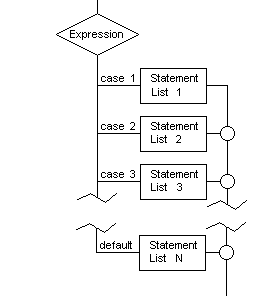Java has a shorthand for these types of multiple
if statements, the switch-case statement. Here's how you'd write the above using a switch-case:switch (x) {
case 0:
doSomething0();
break;
case 1:
doSomething1();
break;
case 2:
doSomething2();
break;
case 3:
doSomething3();
break;
case 4:
doSomething4();
break;
default:
doSomethingElse();
}
x must be a variable or expression that can be cast to an int without loss of precision. This means the variable must be or the expression must return an int, byte, short or char. x is compared with the value of each the case statements in succession until one matches. This fragment compares x to literals, but these too could be variables or expressions as long as the variable or result of the expression is an int, byte, short or char. If no cases are matched, the default action is triggered.Once a match is found, all subsequent statements are executed until the end of the
switch block is reached or you break out of the block. This can trigger decidedly unexpected behavior. Therefore it is common to include the break statement at the end of each case block. It's good programming practice to put a break after each one unless you explicitly want all subsequent statements to be executed.It's important to remember that the
switch statement doesn't end when one case is matched and its action performed. The program then executes all statements that follow in that switch block until specifically told to break.Switch Statement logical diagram

No hay comentarios:
Publicar un comentario